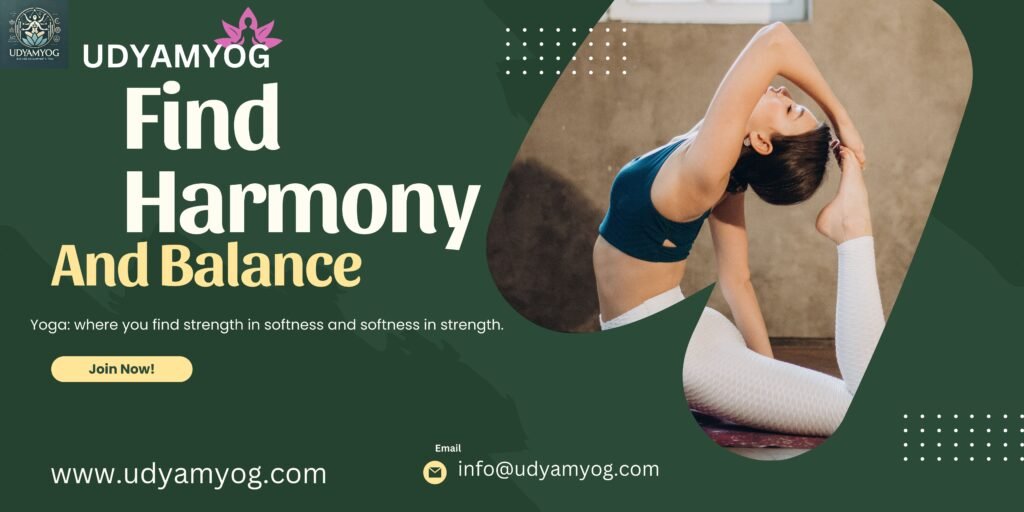How Long to Hold Yoga Poses A Guide for All Levels
At Udyamyog. Here at Yogi Approved. By far the most popular question from students both new and seasoned is: how long should I hold this pose in yoga? Well, the response is not too straight. Types of Yoga + Levels & Intention If you do a pose for too short of an amount of time, you may not get all the benefits and if your hold a pose too long it can lead to discomfort or strain.
In this article, we explore what influences the length of your yoga poses; why and when holding your pose for a specific duration could be beneficial (for both long stretches or short holds); and how to come into deeper connection with your own self so that you can truly realise the benefits in your practice if you want them. This guide can help you find the right balance of effort and ease in your practice, whether you’re brand new to yoga or decades into it.
How Long to Hold Yoga Poses A Guide for All Levels

Importance of Holding Yoga Poses
First things first though, more about why holding a pose is helpful. How long you hold a pose can manifest in different ways throughout your body and mind.
Develop strength: Staying in postures for long invites your muscles to move deep involve. This creates a much-needed strength expecially in core / legs and arms.
Range Of Motion: By holding the pose for a longer period of time, your muscles and connective tissue are properly stretched and lengthened, which improves the range of motion.
Alignment and Awareness: Holding each pose allows you to be more mindful of your alignment and form, helping prevent injury and maximize the benefits for each posture.
Focus and mindfulness: Yoga is not only physical strength, but also mental strength. If we stay away from the physicality of warrior pose, static poses get you tuned into your breath and enable you to calm the mind that leads to mindfulness and overall peace.
Improved blood flow: Holding a pose triggers muscle contractions that help aid blood flow and cleanse the body of toxins.
Time Duration For Beginners To Hold Yoga Poses
When you first start doing this, hold a pose for just 15-30 seconds. This means you can concentrate on form and get the experience of how each pose should be executed without wearing yourself out. A basic rule of thumb for beginners, categorized by popular types of yoga:
Hatha Yoga: Hatha poses are typically 15-60 seconds each. For those new to yoga, starting with 15–30 seconds is a good plan and work up longer as you gain comfort in the poses.
This means that vinyasa flow poses are done with the breath and each posture is usually held for 5-10 breaths before moving on to another pose. Emphasise more on flow and breath coordination and less on static posture holding.
IN RESTORATIVE YOGA: In this asana you will need to hold for longer times like sometimes 5-10 minutes. It is intended to be supported by props, so you can let go a little more and stretch more.
How Long to Hold Yoga Poses A Guide for All Levels

Key Starter Poses and Suggested Duration of the Pose
-
Here I would struggle to complete a deep, 5-breath Downward Dog (Adho Mukha Svanasana), my arms shaking and my legs feeling like logs.
-
Warrior I (Virabhadrasana I): Begin by holding for 15-20 seconds on each side and progressively increase that time to 30 seconds over the course of a month.
-
Balasana (Childs Pose): Relax for 1-2 minutes, resting and recovering between poses.
Intermediate Practitioners: How Long Should You Hold Yoga Poses?
As you progress, you will learn how to have a more extended stay in your asanas. Beginners should hold a pose for some five breaths, while more advanced will do for 20–30 seconds or even longer in certain styles of yoga the type of the pose etc.
Power Yoga: This form concentrates on strength-building power and poses are maintained for 30 seconds to 1 minute before you move on. The longer holds are great for muscle and endurance.
Iyengar Yoga: This type of yoga is known for its focus on alignment and precision so poses are often held anywhere from 1 to 3 minutes. It enables better form and activates the muscles on a deeper level.
Yin Yoga: In yin, the poses are held for longer durations, longer mutations typically about 3 to 5 minutes. This is working into the deep connective tissue to increase elasticity and release tension.
OR -Intermediate Key Poses and Suggested Hold Times
-
Utkatasana (Chair Pose): 30-45 seconds -Strengthens the legs and core.
-
Virabhadrasana II or Warrior II: 30–60 seconds per side with focus on form and staying steady.
-
Vrksasana (Tree Pose) — Hold the pose for 30 seconds to a minute to improve your balance and stability.
Advanced practiced = More Time in poses
Mostly 1 or 2 minutes, longer in some styles of yoga and with more advanced yogis. By this point your body has adjusted to regime of longer holds, and you begin concentrating on stretching and alignment-based power to put less stress on each individual muscle for the long-haul.
Advanced Vinyasa: In advanced vinyasa classes, you may find yourself holding the shape of a crow pose (bakasana) for over 1 minute to build strength and focus.
Ashtanga Yoga: The second style we are featuring, the Ashtanga poses are usually held about 5 breaths however as you become deeper advanced, you may be expected to hold poses longer so as to build up your physical stamina and mental ability.
Hot Yoga: Hot yoga is a style of yoga in which yoga poses are done in a hot room (usually 40 °C). The warm allowed for a bit of deeper stretching, but you do want to be careful not to pull the muscles too far.
Key Poses and hold times for Advanced Students
-
Crow Pose (Bakasana): Practice holding for at least 30-60 seconds to improve arm and core strength.
-
Pigeon Posture (Eka Pada Rajakapotasana): Keep 1-2 minutes per side to extend the hips deeply.
-
Headstand (Sirsasana) — up to 5 minutes with emphasis on mastery of breath and correct form
When to Exit a Pose
The above guidelines are certainly helpful but the most significant part of holding an asana for X amount of time is listening to your body. When you should stop a pose: — Some indicators that it is time to let the pose go:
-
Labored Breath: If you are breathing heavily, it is time to come out of the pose
-
Muscle Fatigue: you do not feel heavy, involuntary trembling or that the muscles of a part of your body are about to give up. In this case, it is time to ease out of the stand and does not run-in order not to harm yourselves.
-
Stabbing pain: Discomfort in a pose is normal while doing yoga, but if it starts to feel sharp and intense, pull out of the posture.
It is best to hold the pose shorter without sacrificing form, than doing longer holds and hurting yourself.
How Long to Hold Yoga Poses A Guide for All Levels

The Intake of Breath in Poses
Regardless of the time duration in which you are holding a pose, let your breath lead the way. Breath is life in yoga – it brings energy, grounds you and keeps you focused. Regardless of the number of breaths or minutes you are in a pose, keeping whatever natural, rhythmic breathing pattern is right for you will let your body know that it is safe and able to do what it needs to.
conclusion, discovering your ideal hold time
Yoga is a practice and there is no one size fits all length of holding a pose. This will vary based on what you are trying to accomplish, your style of yoga and how advanced you are. This can be kept short for beginners and enthusiasts may vary the duration to long. Most importantly, listen to your body, keep good alignment, and let your breath make space for you.
At Udyamyog. At DoYou, we want you to change up your hold times and play around with different styles of yoga to see what suits you best. If you are interested in continuing to read this article then here is the deal: The perfect hold time that will help meet all of these goals, increase strength, flexibility and mindfulness in your yoga practice.
How Long to Hold Yoga Poses A Guide for All Levels
Happy Practicing! Namaste.


2 thoughts on “How Long to Hold Yoga Poses A Guide for All Levels”